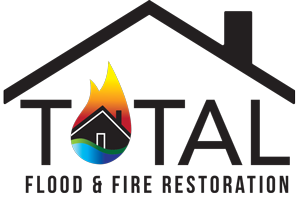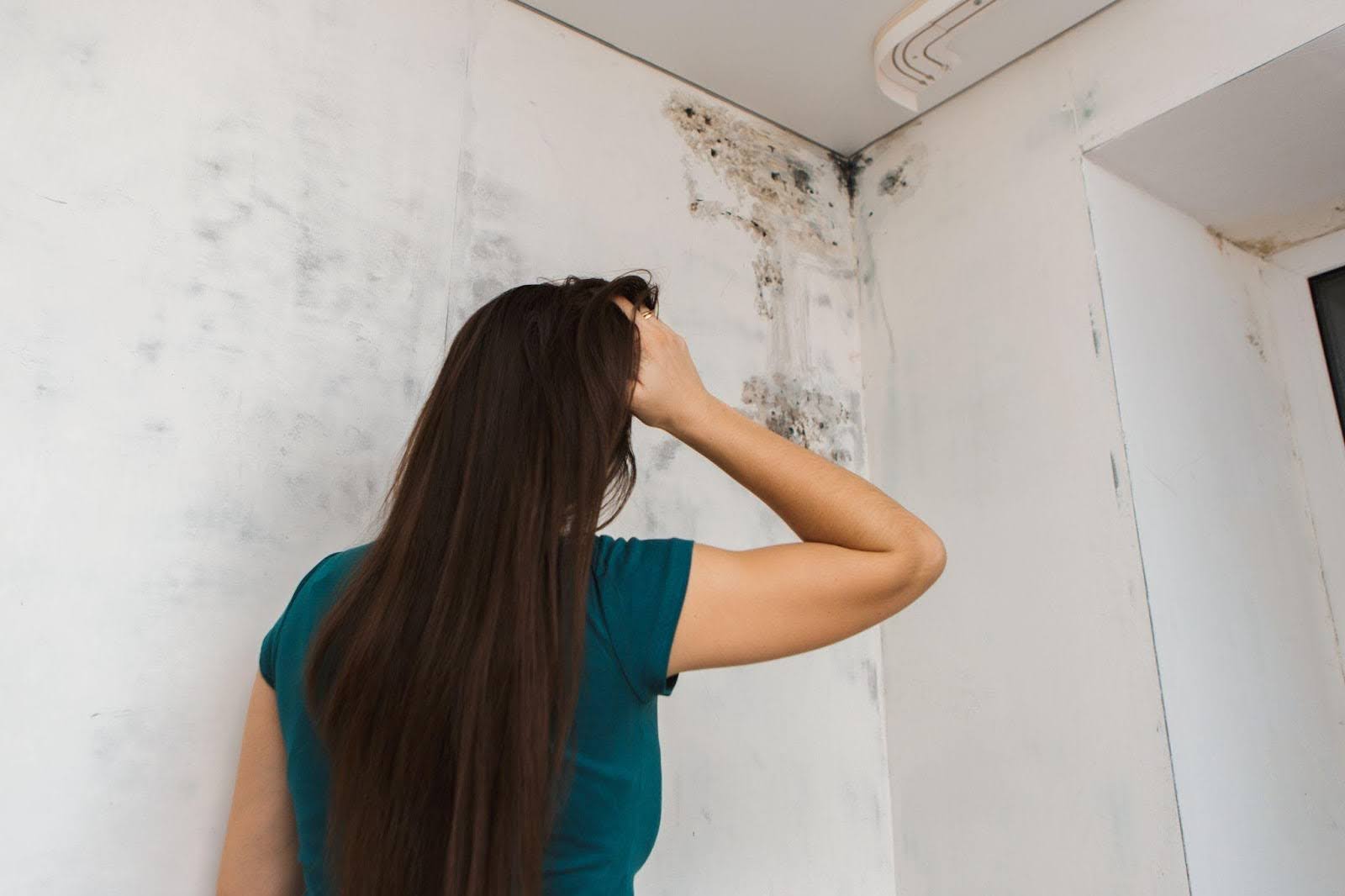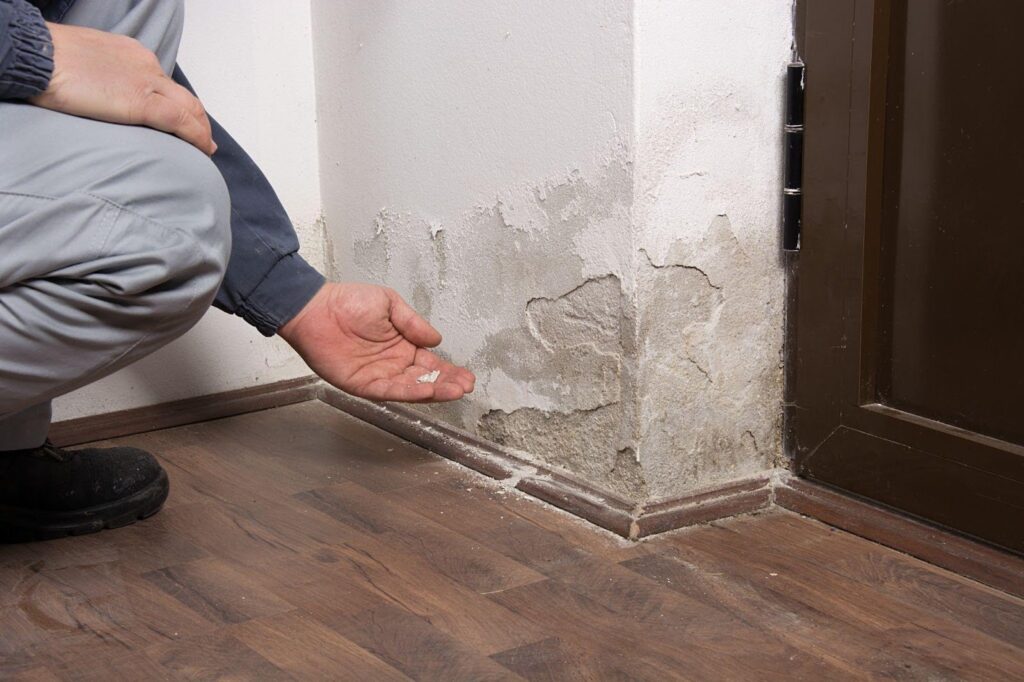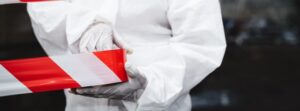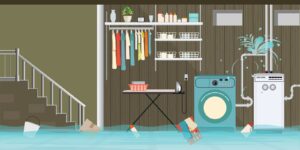Why is it important to mold-proof your living spaces? Because mold threatens your home and safety. It damages your health, destroys valuables, and weakens your property. It spreads quickly, feeding on organic materials like paper, fabric, and wood. Without intervention, mold ruins family photos, books, clothing, furniture, and even electronics.
It also compromises your home’s structure. Mold warps wood, corrodes surfaces, and creates persistent odors that linger in walls, ceilings, and floors. Left alone, it becomes a costly and overwhelming issue.
This blog teaches you how to stop mold before it starts. We’ll cover moisture control, ventilation, and storage tips that help you protect your belongings, your investment, and your peace of mind.
The risks of mold growth
Mold invades silently, thriving in damp, poorly ventilated spaces and causing widespread damage before you even notice it. Even a small leak under the sink or condensation near a window can trigger a chain reaction.
Within 24 to 48 hours, microscopic spores begin multiplying, feeding on anything organic. High humidity levels only accelerate the process, allowing mold to embed itself deep into walls, ceilings, and everyday possessions.
Many household items create ideal conditions for mold to flourish. Paper-based items like photographs, important documents, and books absorb moisture quickly and provide mold with a ready food source. Upholstered furniture, drapes, and rugs trap humidity and offer dense surfaces where mold can grow unnoticed.
Even electronics, especially those containing natural fibers or dust buildup, can harbor mold in internal components, leading to permanent damage.
Once mold takes hold, it spreads rapidly. It damages not only what it touches but also the air quality in your home. Spores circulate through HVAC systems, landing in new areas and creating additional colonies.
The longer mold remains undetected, the more difficult and costly it becomes to eliminate — not to mention the health risks it introduces, such as allergies, respiratory issues, and skin irritation.
Preventing mold growth isn’t only about keeping your home clean. Fixing leaks quickly, improving airflow, monitoring humidity, and storing valuables properly all play a role in mold defense. By staying ahead of the problem, you protect your investment, safeguard your health, and avoid the emotional and financial burden of full-scale mold remediation.
Controlling indoor humidity
Excess moisture fuels mold growth. To create an environment where mold struggles to thrive, keep indoor humidity between 30% and 50%.
Use a hygrometer to monitor moisture levels throughout your home. Place it in high-risk areas like basements, bathrooms, laundry rooms, and storage closets. These devices provide accurate readings, helping you take action before moisture becomes a serious issue.
Run a dehumidifier in damp spaces and maintain your HVAC system to ensure proper airflow and filtration. Clean filters, sealed ducts, and well-ventilated rooms help regulate humidity. By staying proactive with moisture control, you protect your home and valuables from hidden mold threats.
Improving airflow and ventilation
Poor airflow allows humidity and moisture to settle and create prime conditions for mold. Target high-risk areas like bathrooms, kitchens, basements, and laundry rooms, where steam and condensation build quickly without proper ventilation.
Keep air moving by decluttering tight spaces and arranging furniture away from walls. Open interior doors regularly and avoid blocking vents. Use breathable containers in closets or storage rooms, and avoid stacking items tightly against each other or the wall.
Install and maintain exhaust fans in bathrooms and kitchens to remove steam and damp air. Crack open windows when the weather allows to refresh indoor air and reduce moisture. Consistent ventilation disrupts mold growth and keeps your space healthier and safer.
Waterproofing key areas of the home
Moisture intrusion creates the perfect breeding ground for mold, especially in hidden or low-traffic areas. To effectively mold-proof your home, focus on waterproofing vulnerable spaces where dampness builds up quickly.
Start by sealing cracks and gaps in your foundation, windows, and walls. Use high-quality caulking or weatherproof sealant to stop water from creeping inside during rainstorms or snowmelt. Don’t overlook window wells and basement egress areas. Reinforce them with proper drainage and covers.
Install sump pumps and vapor barriers in basements to manage groundwater and prevent seepage. A reliable sump system diverts excess water, while vapor barriers protect walls and flooring from absorbing moisture. These defenses play a critical role in keeping your basement dry year-round.
Crawlspaces and attics also demand attention. Insulate them well and use moisture-resistant materials. Ensure both areas have adequate ventilation to prevent condensation. Place a plastic moisture barrier over crawlspace soil and regularly check for leaks or pest intrusion that could introduce dampness.
By fortifying these key areas, you create a durable barrier against mold and safeguard your home’s structure and valuables from long-term damage.
Mold-resistant materials and storage tips
Mold prevention starts with smart material and storage choices. By using mold-resistant products and protecting your belongings from moisture exposure, you build a strong defense against fungal growth and property damage.
Start with your home’s structure. Choose mold-resistant drywall for basements, bathrooms, and kitchens, especially in areas prone to high humidity. These specially treated panels resist mold better than standard drywall.
Use mold-resistant insulation like closed-cell spray foam, which repels moisture while improving energy efficiency. Opt for mold-inhibiting paint formulas designed to prevent spores from taking hold on walls and ceilings.
For valuables, storage matters as much as location does. Use airtight, moisture-proof containers made of heavy-duty plastic with sealed lids to keep documents, electronics, photos, and textiles safe. Add desiccant packs inside to absorb excess moisture and maintain dryness. Label containers clearly and store them off the ground to protect against flooding or condensation.
Skip cardboard boxes in any humid area. Cardboard absorbs moisture and provides a food source for mold, making it a high-risk choice for attics, basements, or closets. Replace them with stackable bins or vacuum-sealed bags for safer, longer-lasting storage.
Using mold-resistant building materials and safeguarding your belongings with proper storage reduces the risk of mold damage and protects what matters most.
Cleaning and maintenance best practices
Routine cleaning and maintenance play a vital role in mold prevention. Even the most airtight homes remain vulnerable if you overlook high-risk areas or allow moisture to linger.
Inspect hidden spots frequently. Check behind appliances, under sinks, around windowsills, and inside closets. Mold often thrives unnoticed in these places. Use a flashlight to catch early signs like musty odors, discolored patches, or condensation buildup. The sooner you detect mold, the easier it becomes to eliminate.
Clean with purpose. Choose mold-inhibiting cleaners that target spores before they spread. For a natural alternative, mix white vinegar or hydrogen peroxide with water to sanitize surfaces without harsh chemicals. Scrub grout, shower walls, and window tracks regularly to stop mold from taking root in these damp-prone areas.
Act quickly when moisture appears. Wipe down wet countertops, floors, or windows immediately after spills, rain, or condensation. If a leak occurs, dry and ventilate the space thoroughly within 24–48 hours to avoid triggering mold growth. Use fans or open windows to speed up the drying process.
Preventing mold through consistent cleaning and maintenance helps protect your home’s air quality, your belongings, and your family’s health. Stay vigilant and stay dry and mold won’t stand a chance.
When to call in the professionals
Sometimes, mold hides where you least expect it, and by the time it shows visible signs, the damage runs deep. Knowing when to bring in professionals can save your valuables, your property, and your peace of mind.
Watch for signs of hidden infestations. Musty odors, persistent allergy symptoms, and unexplained stains on walls or ceilings often signal mold beneath the surface. Peeling paint, warped wood, and soft drywall also suggest that moisture and mold have crept in beyond what’s visible.
Mold remediation experts protect your property with precision. These specialists use tools like infrared cameras and moisture meters to locate and eliminate hidden mold. They seal off affected areas, remove contaminated materials safely, and restore your home without spreading spores. Their expertise keeps valuable items like artwork, electronics, and heirlooms from permanent damage.
Consider preventive mold inspections, especially after leaks, floods, or extended humidity. Pros identify vulnerabilities before they become costly problems and recommend targeted solutions that fortify your home against future growth.
Calling in professionals early ensures safer, more effective mold removal — and gives you confidence that your home and everything inside stays protected.
Protect your home and valuables with Total Flood and Fire Restoration
When prevention isn’t enough, or you suspect mold may be hiding behind walls or under floors, don’t take risks with your property. Total Flood and Fire Restoration provides expert mold remediation and prevention services to protect what matters most.
Our certified team uses advanced equipment, proven techniques, and years of experience to detect, eliminate, and defend against mold. Breathe easier knowing your home is in good hands.
Do you need help mold-proofing your home or restoring damage? Contact Total Flood and Fire Restoration today for professional support and lasting peace of mind.
